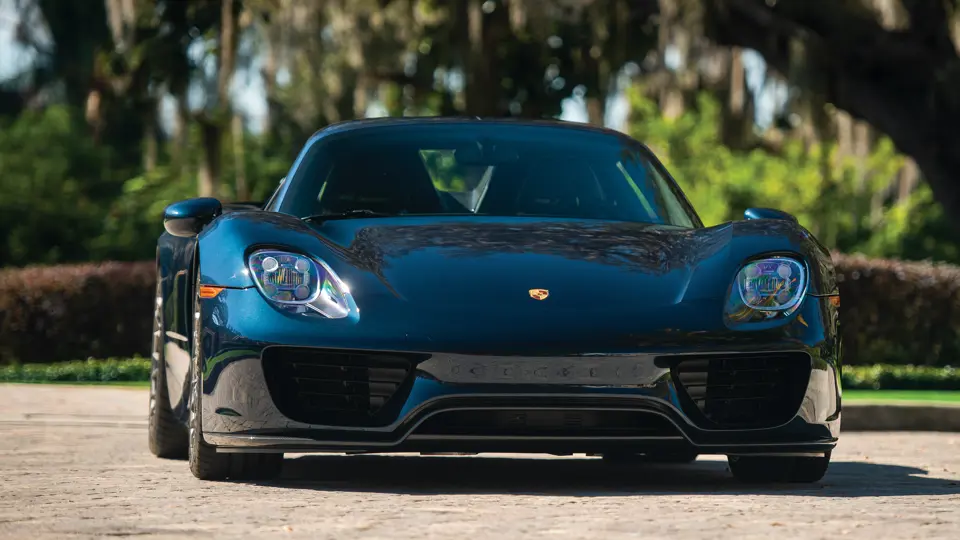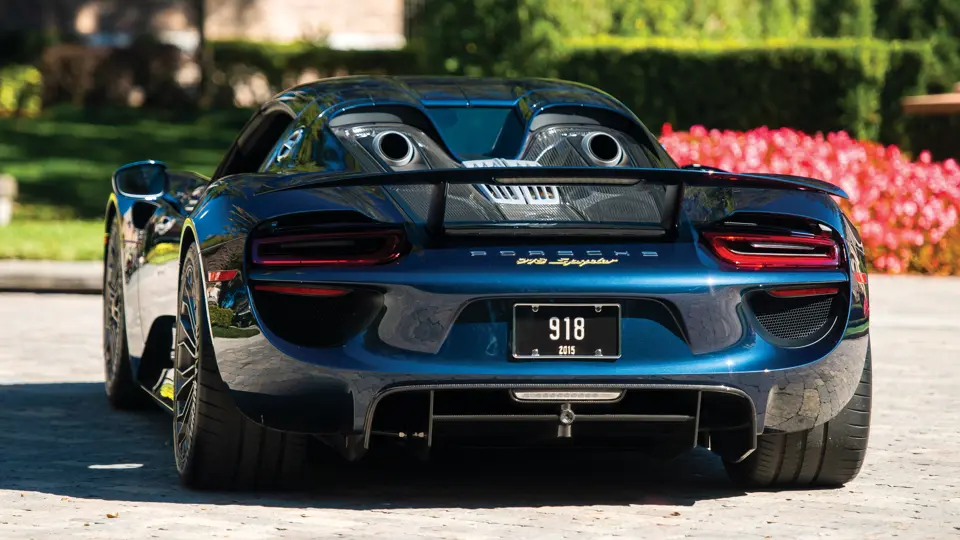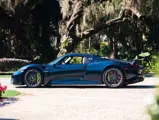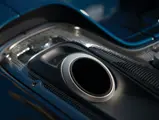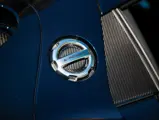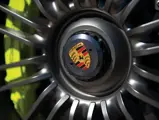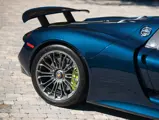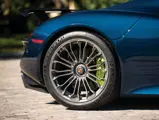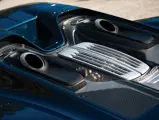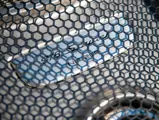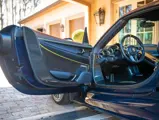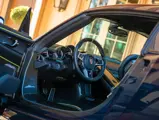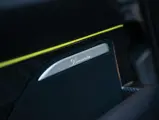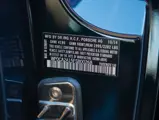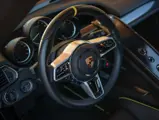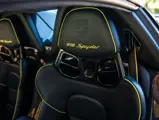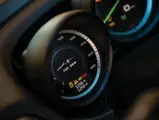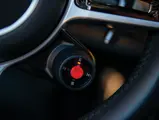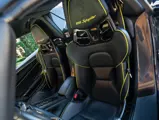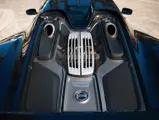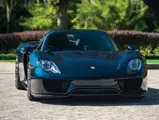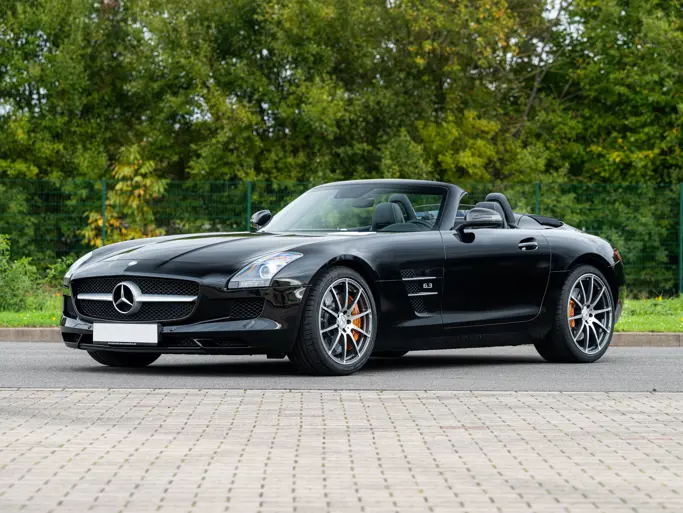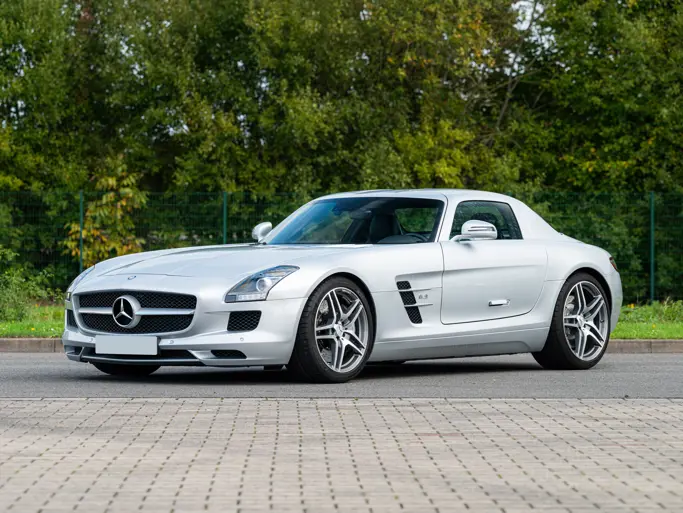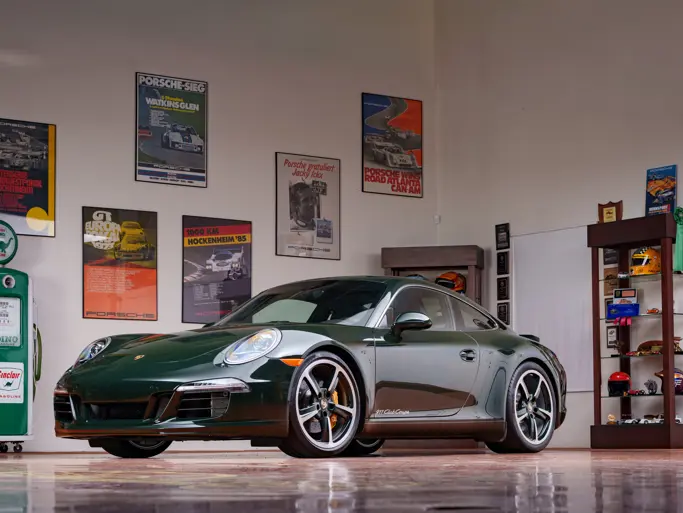Over the course of its 70-year history, Porsche has been at the forefront of crafting automobiles at the cutting edge of performance and technology. Influenced by both the technological powerhouse that was the 959 and the uncompromisingly thrilling Carrera GT, the 918 Spyder utilizes state-of-the-art hybrid-electric technology to improve efficiency, as well as raise the bar of hypercar performance.
The 918 Spyder features a chassis constructed almost entirely out of carbon fiber-reinforced plastic composite. At its heart is a naturally aspirated 90-degree V-8 based on the engine in the RS Spyder LMP2 Le Mans prototype. It can rev to an earth-shaking 9,000 rpm thanks to its flat-plane crankshaft, titanium connection rod, four valves per cylinder, and dry-sump lubrication. Direct fuel injection and the patented Porsche Variocam intake system provide an output of 608 bhp, which translates to an exceptional 133 bhp per liter of displacement.
Supporting the 918 Spyder’s conventional engine are a pair of electric motors; one mated to the V-8 itself and another providing drive to the front axle. Offing an additional 284 bhp, they bring total output to 887 bhp and 944 foot-pounds of torque. All this power is managed through the venerable Porsche PDK seven-speed transmission, and its delivery can be further refined through five driving modes, ranging from full electric to ‘Hot Lap,’ which squeezes out every ounce of available performance from the hybrid powertrain.
Of course, the brakes that bring the car to a halt are just as mighty as the 918 Spyder’s gargantuan power train. Massive carbon-ceramic discs sitting behind the car’s lightweight alloy wheels measure at 410 mm in diameter at the front with six piston calipers and 390 mm in diameter at the rear with four piston calipers. Assisting the car’s handling and downforce are a handful of active aerodynamic features. This includes an adjustable rear wing, a pair of under-floor flaps in the nose, and further adjustable flaps in the headlamp area. These can all be adjusted to provide either maximum efficiency or additional downforce, directly linked to the car’s driving modes. Porsche also fitted an active rear-wheel steering system, the first of its kind for the manufacturer. Below 31 mph, the rear wheels steer in the opposite direction of the front wheels to make it more maneuverable at low speeds, effectively reducing the car’s wheelbase. However, above 50 mph, the rear wheels turn in the same direction as the front wheels, helping to make the car more stable at high speeds.
The 918 Spyder’s performance is nothing short of exceptional. The sprint from 0–60 mph can be reached in less than 2.5 seconds, faster than its hybrid hypercar rivals, the McLaren P1 and Ferrari LaFerrari. Should the driver be brave enough to keep accelerating, the hybrid Porsche can achieve a top speed of 211 mph. Comparing performance figures between ‘the big three’ showed that not only was the 918 the fastest to 60 mph, it also boasts the furthest electric-only range, lowest carbon dioxide emissions, and lowest fuel consumption.
Of the 918 examples produced, fewer than 300 were earmarked for the U.S. This car’s first owner was particularly lucky as he had the opportunity to order each of the hybrid hypercar trio and was surely one a select handful to have that opportunity. The 268th 918 Spyder built, this car’s first owner chose a tastefully subtle color scheme of Dark Blue metallic over a Black leather interior with Acid Green highlights. Options include the nose lifter, glare reducing interior package, visible carbon fiber interior trim, a fire extinguisher, Burmester premium sound system, Acid Green seat belts, and wheels painted Platinum Silver.
Delivered new to Miami, the car accumulated only 817 miles with its first owner before passing to its second custodian, another Florida-based collector. In total, it has been driven just under 1,300 miles from new and remains in exceptional condition, having recently had an oil change. The pinnacle of Porsche’s performance and their hybrid-electric technology flagship, the 918 Spyder follows in the footsteps of the vaunted 959, albeit in the 21th century. These cars will surely remain desirable and sought after for years to come and will continue to remain extremely competitive against future generations of hypercars as well. This example needs nothing and is prime for inclusion in any collection of Porsches and modern supercars.




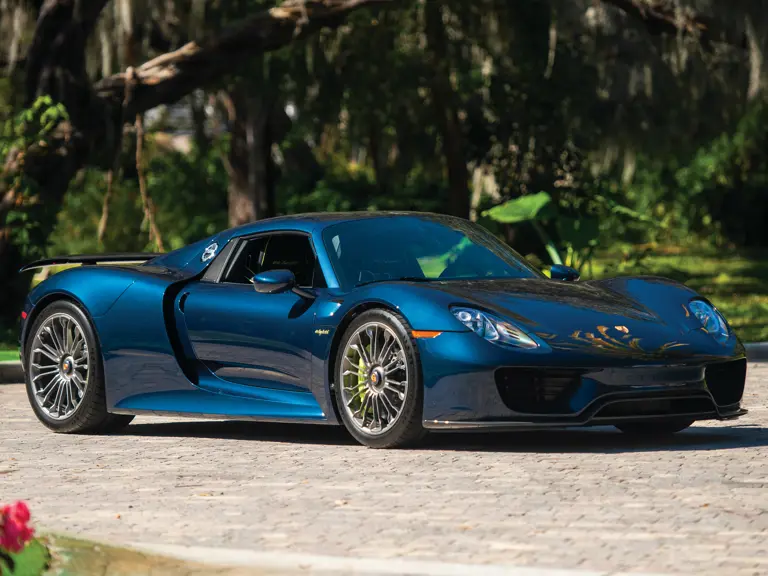
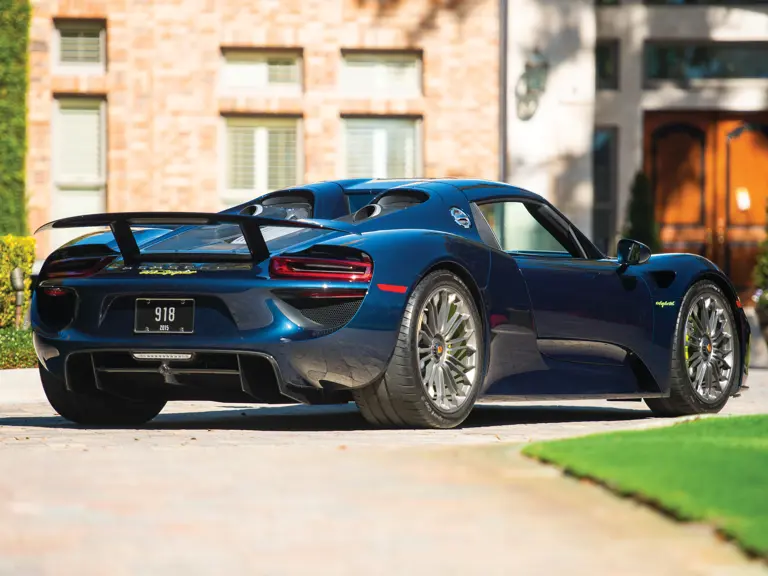
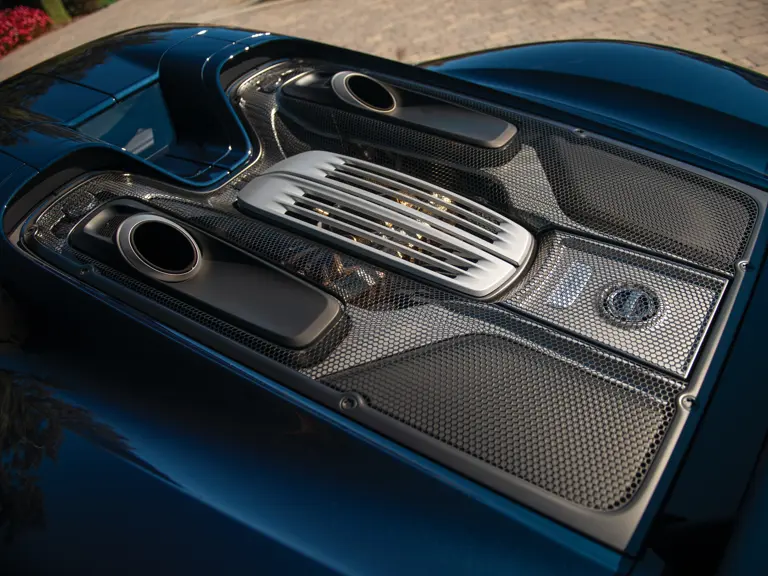
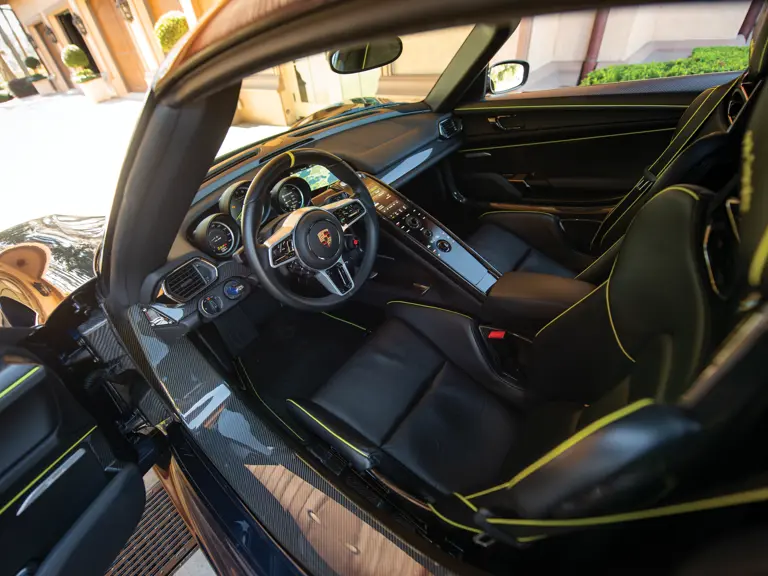
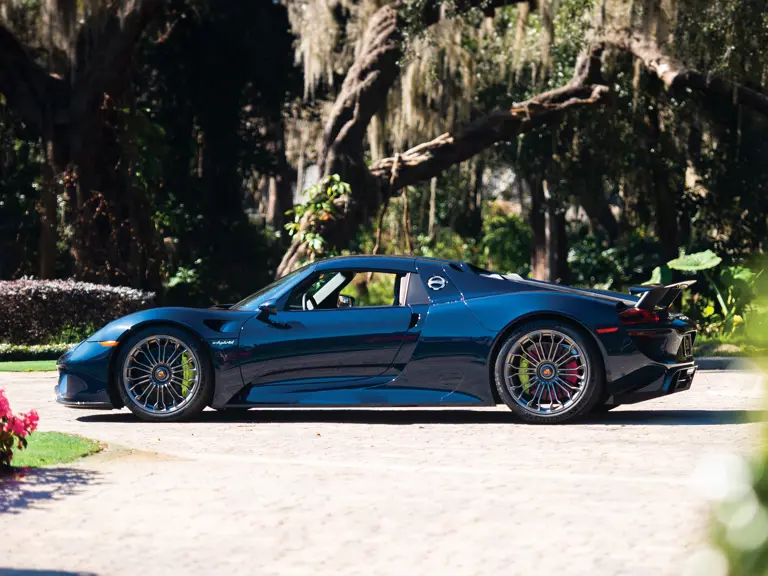
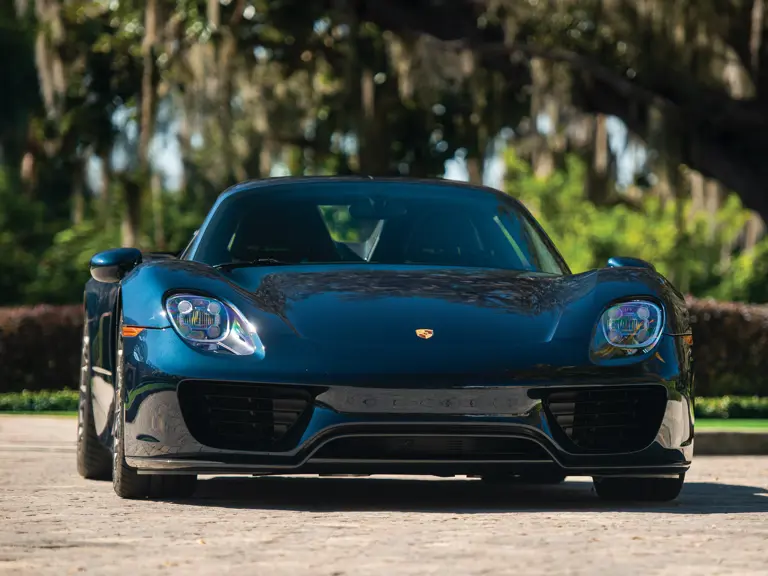


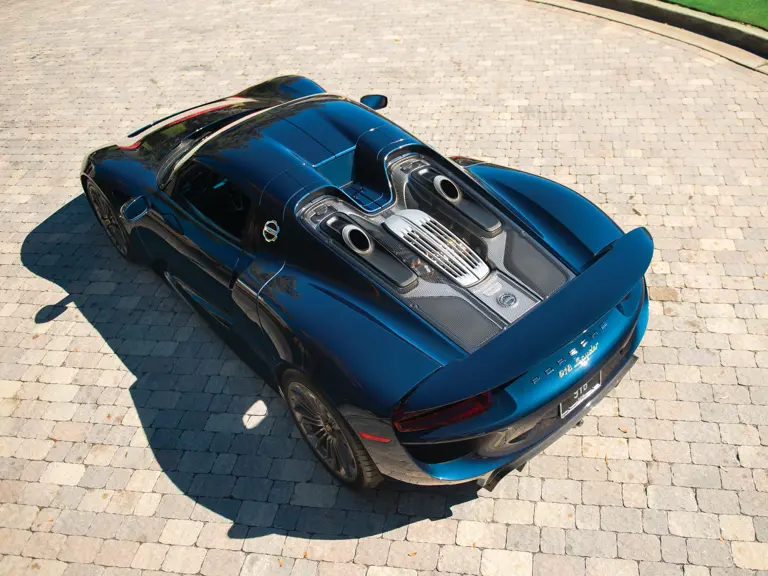
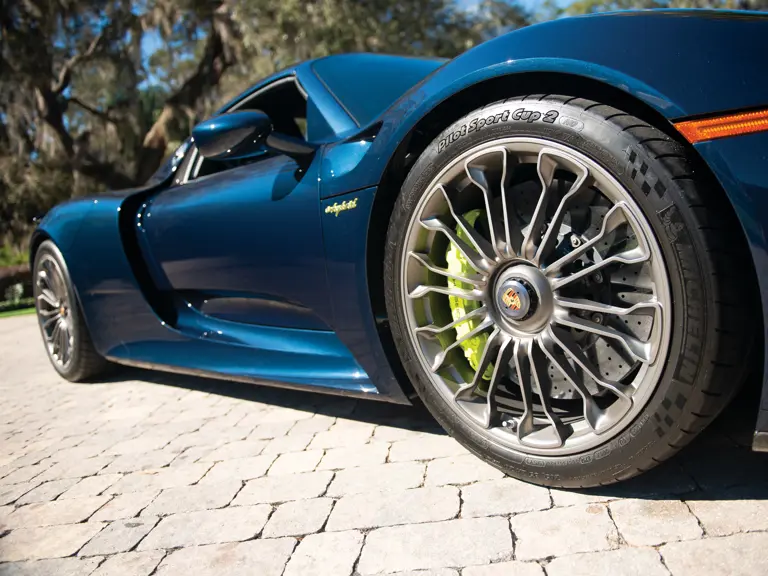
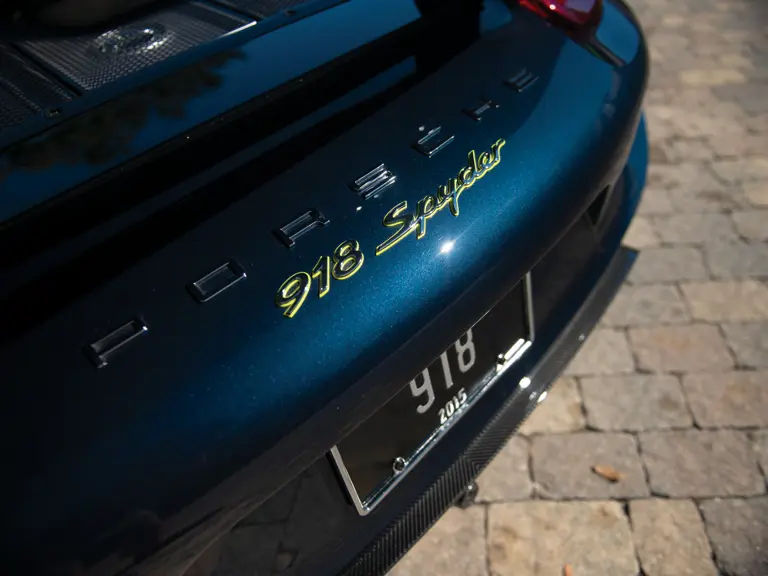
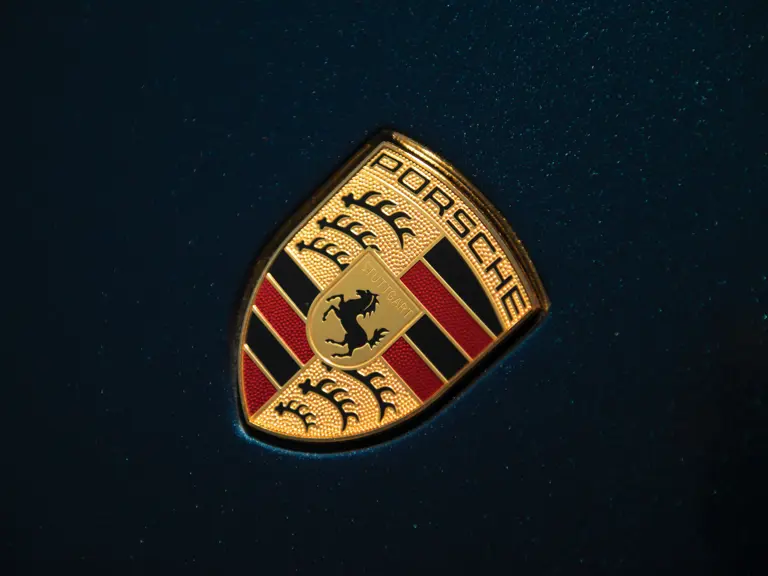
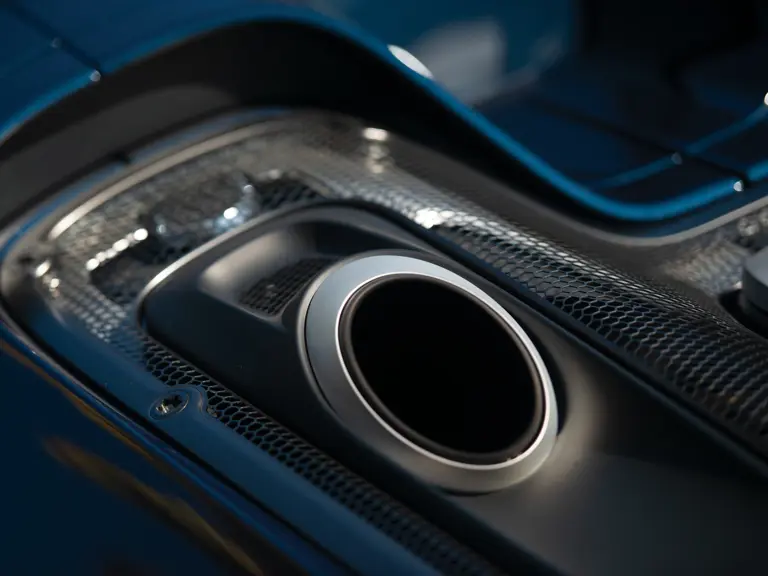
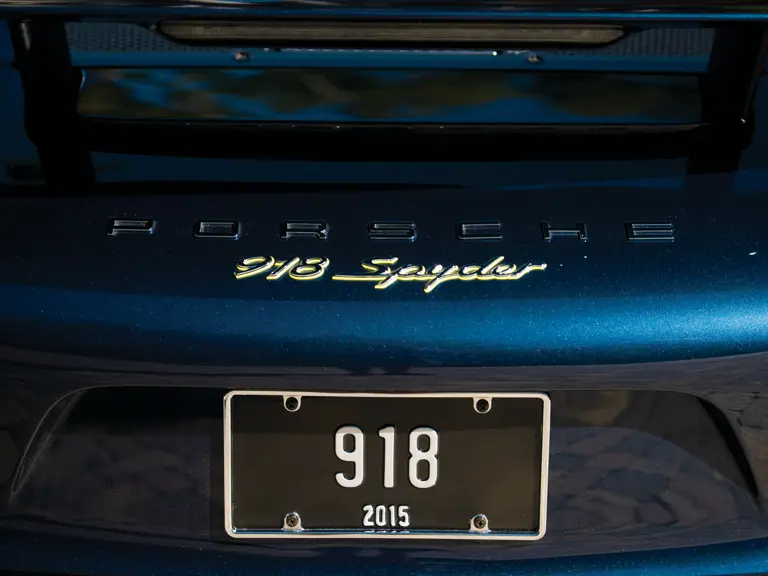
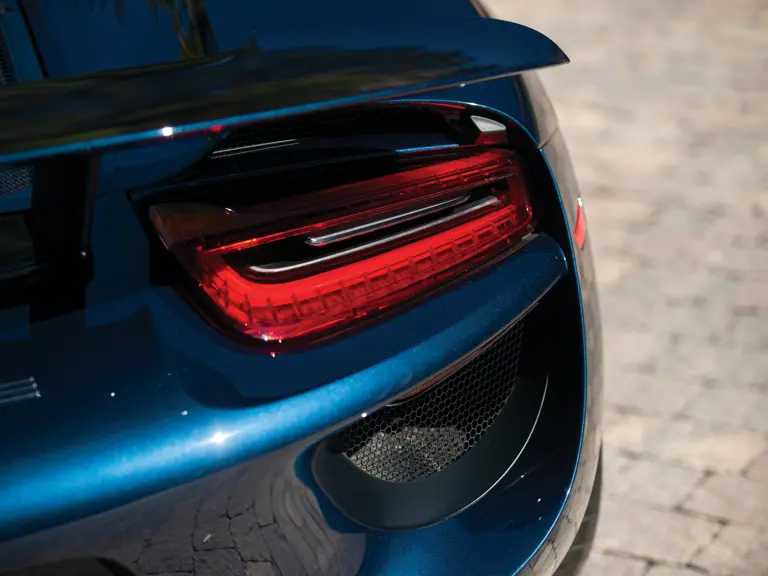
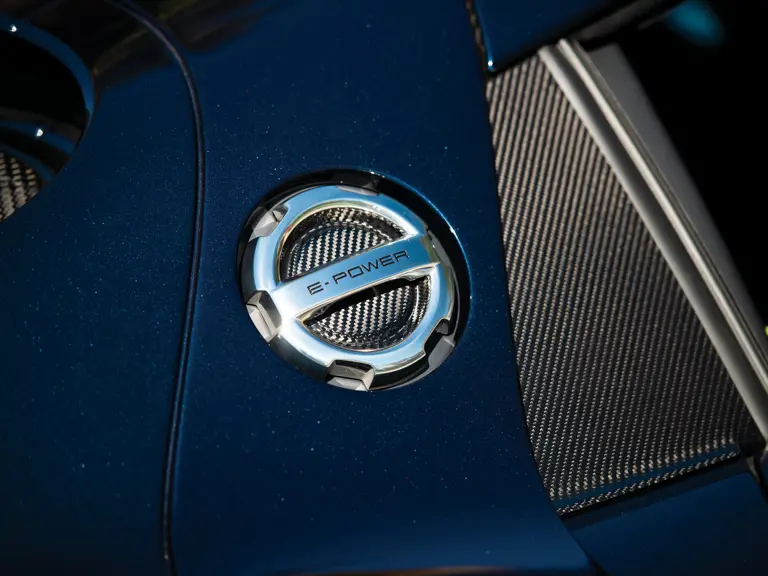
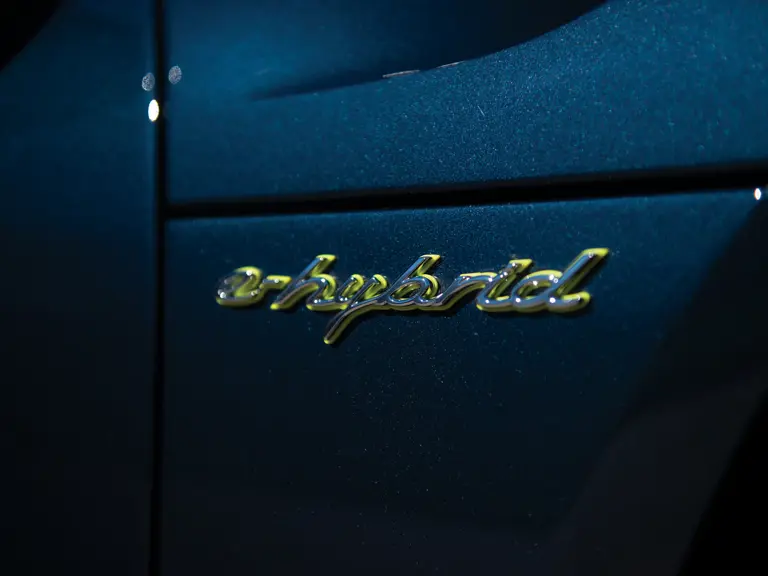
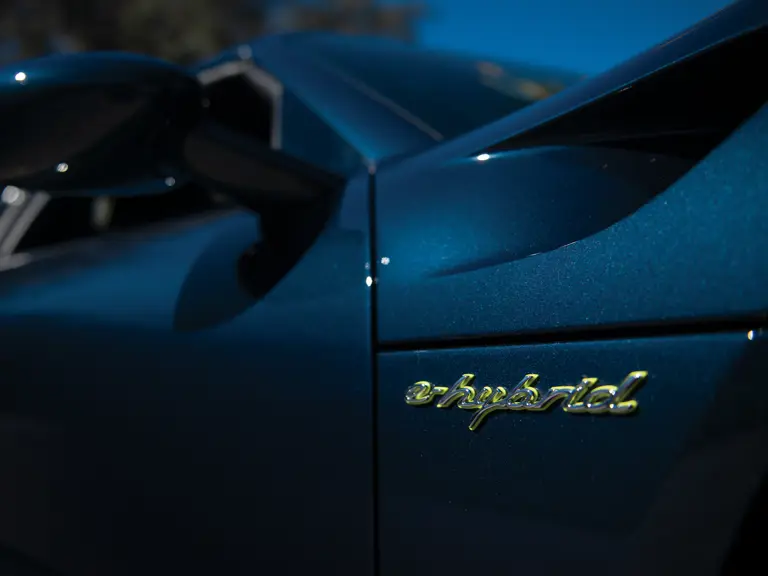
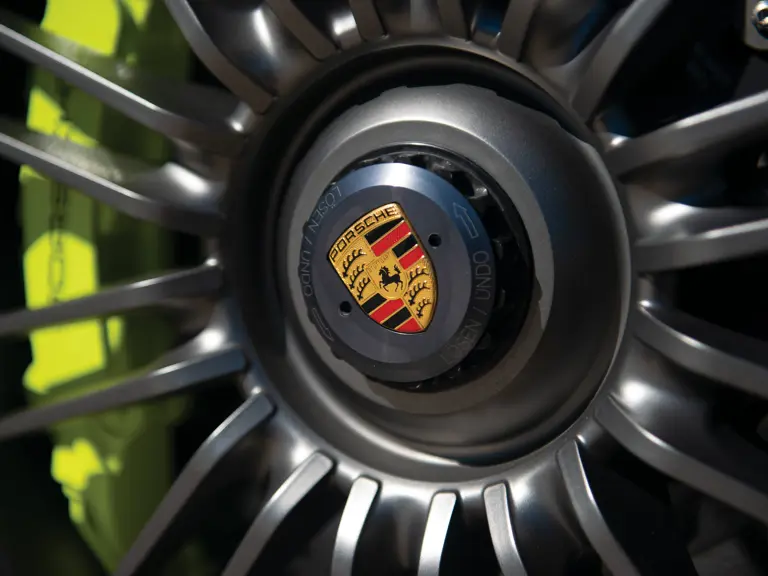

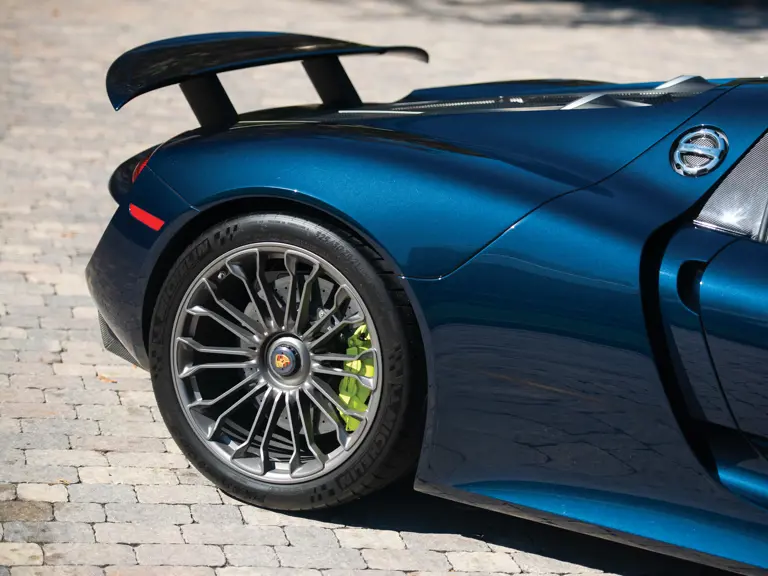
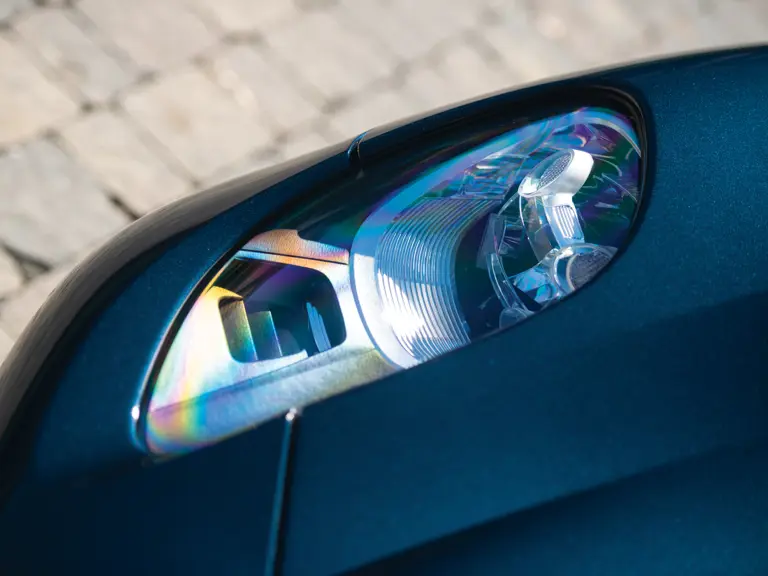
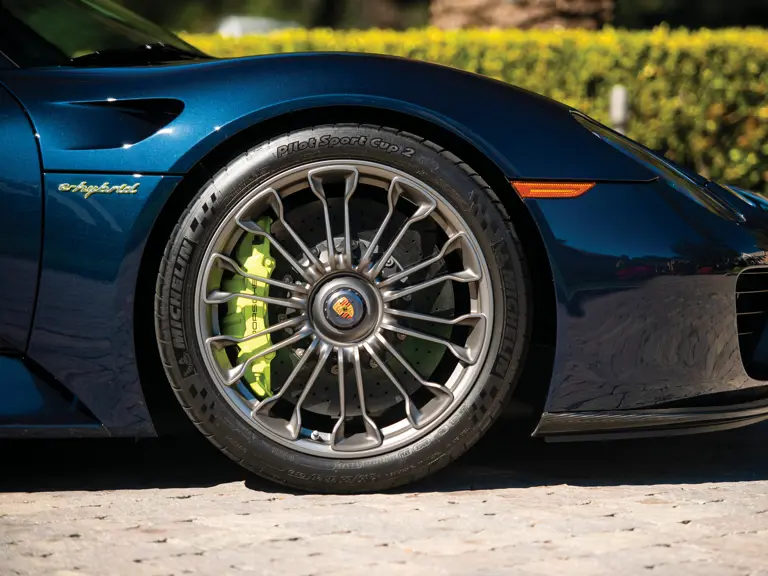
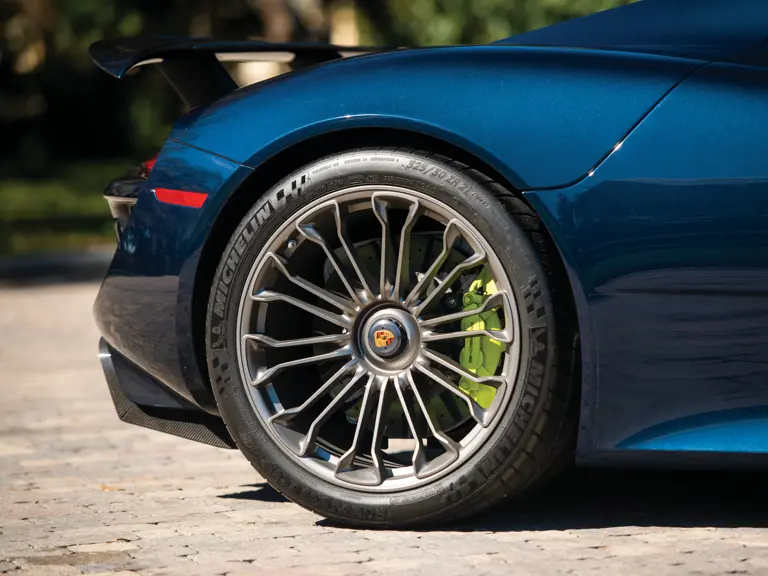
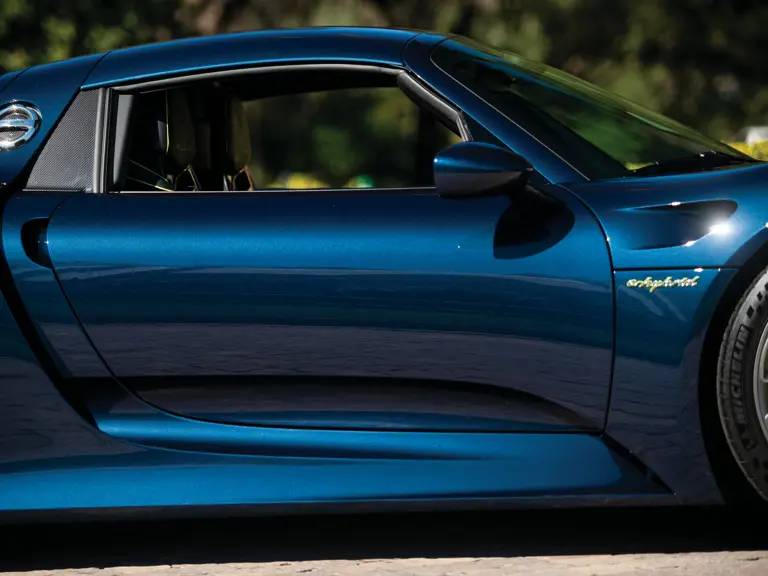
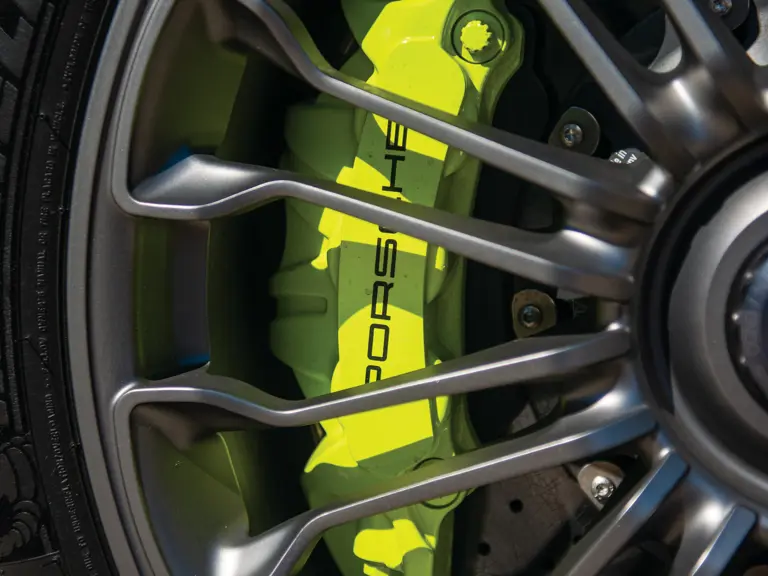
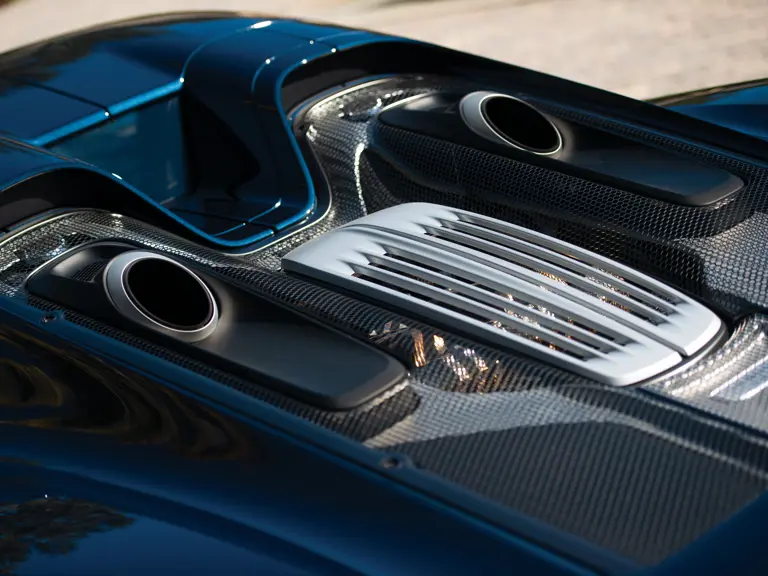
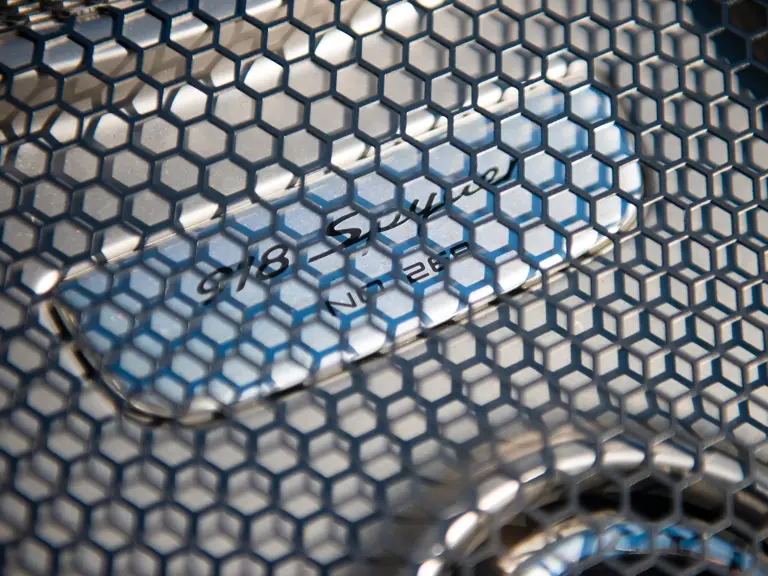
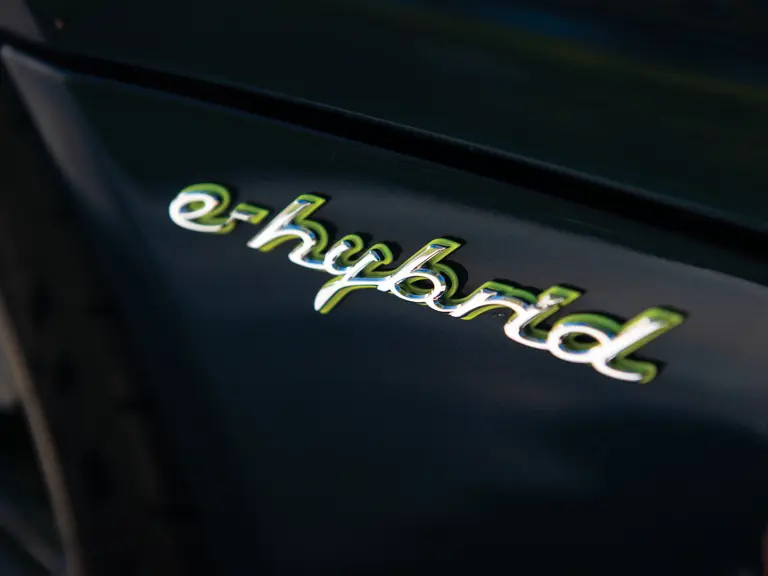
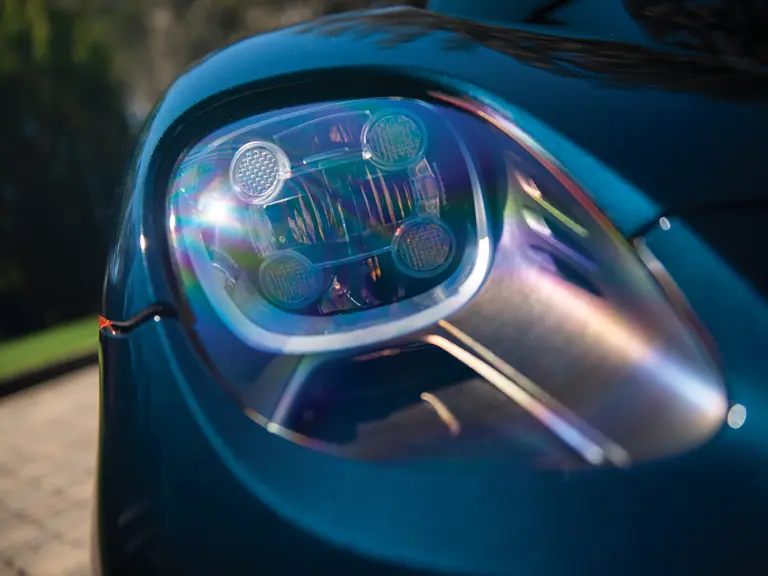
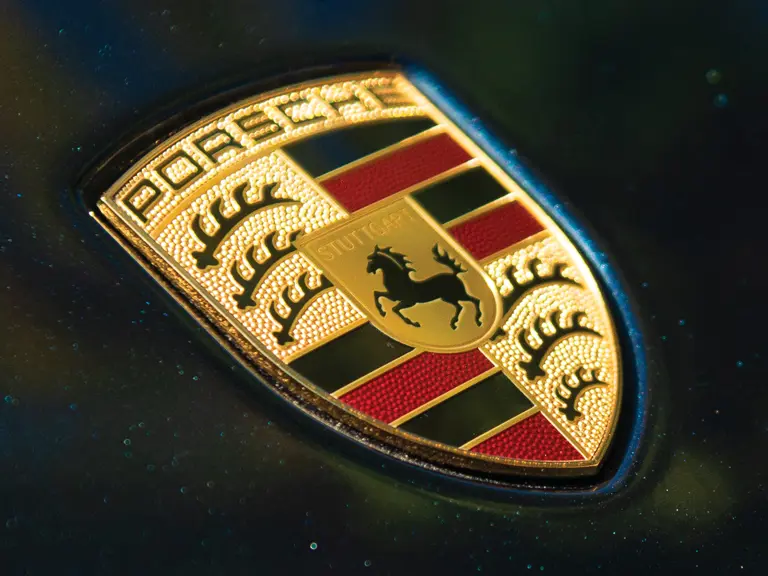
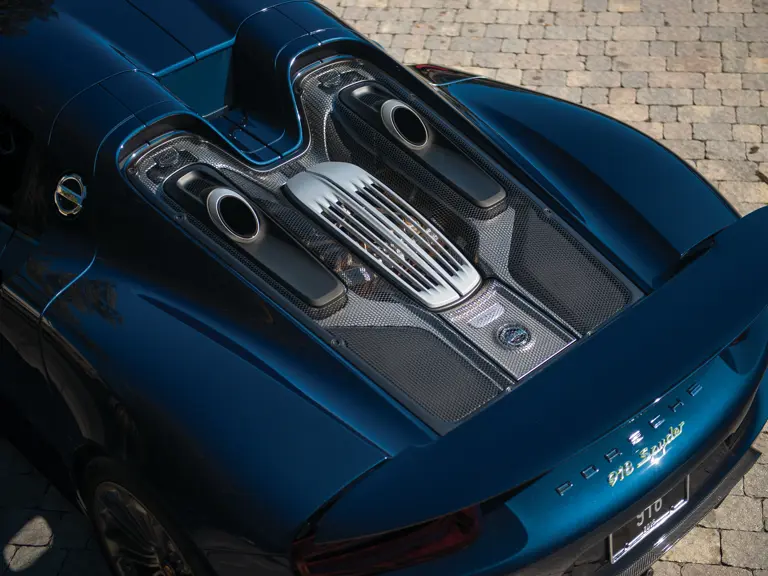
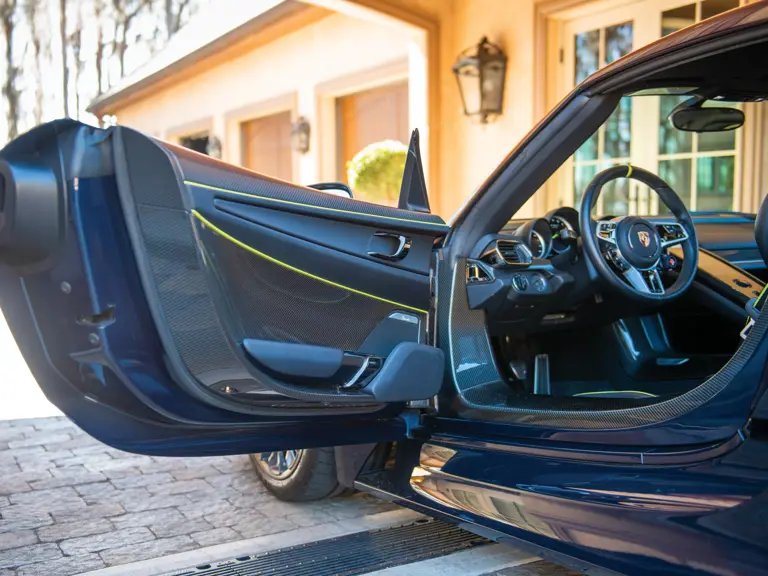
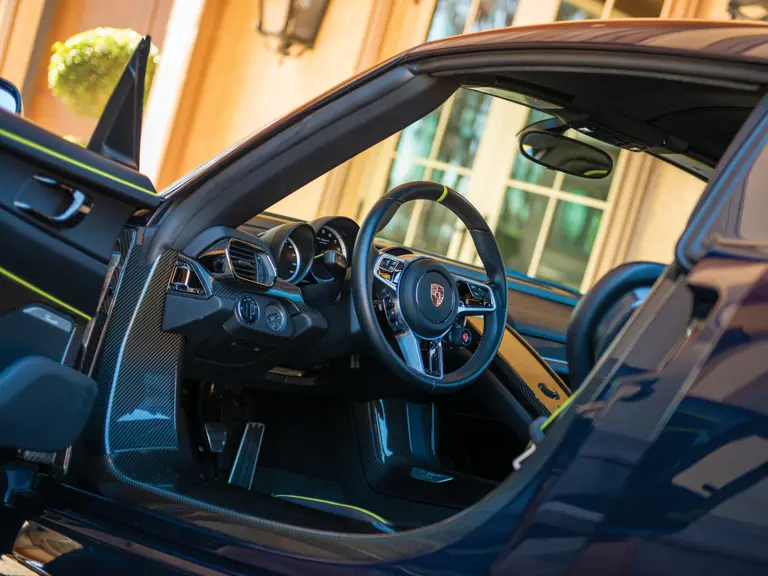
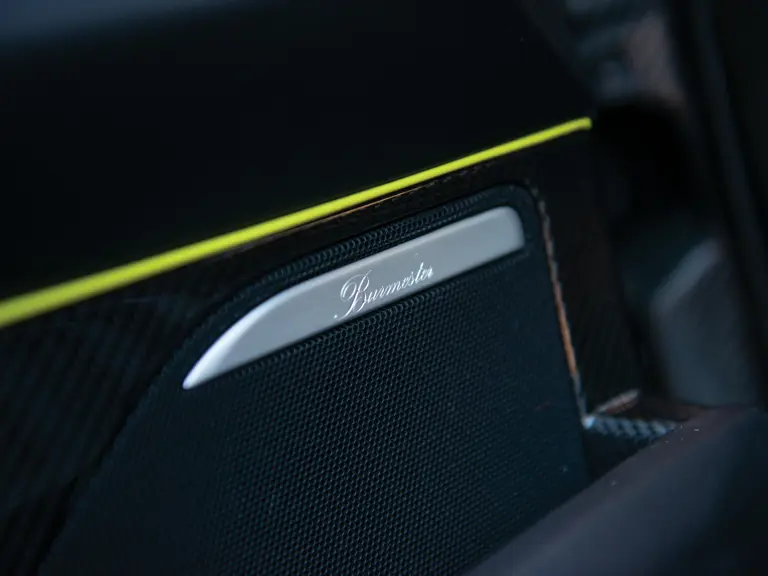
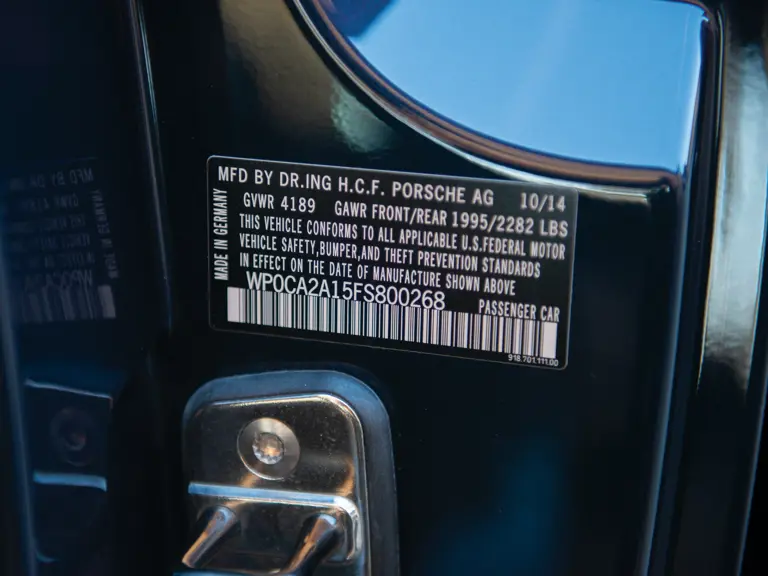
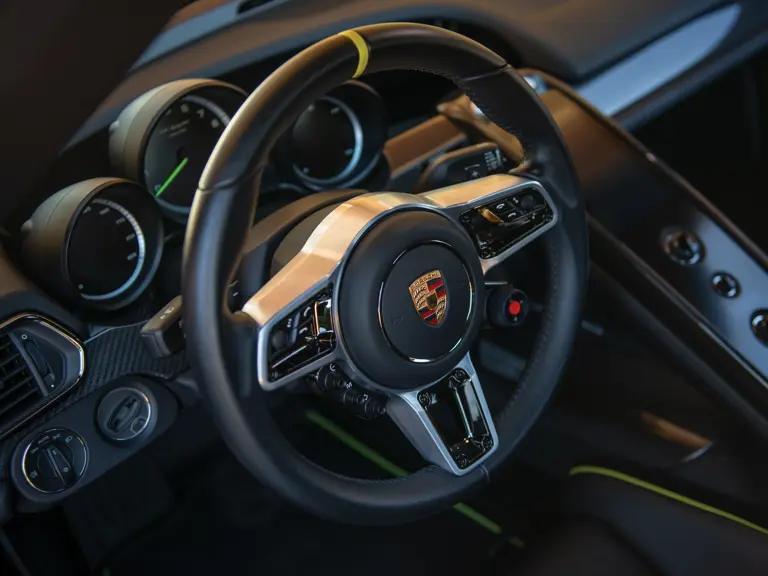
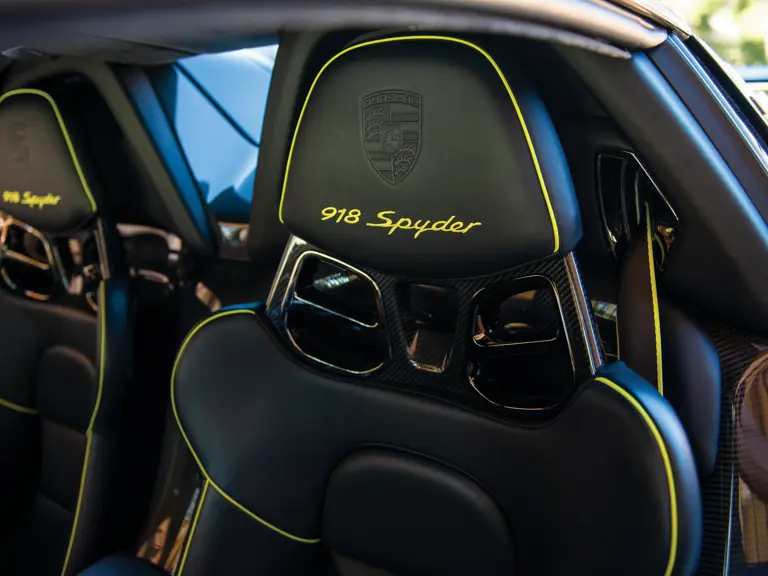
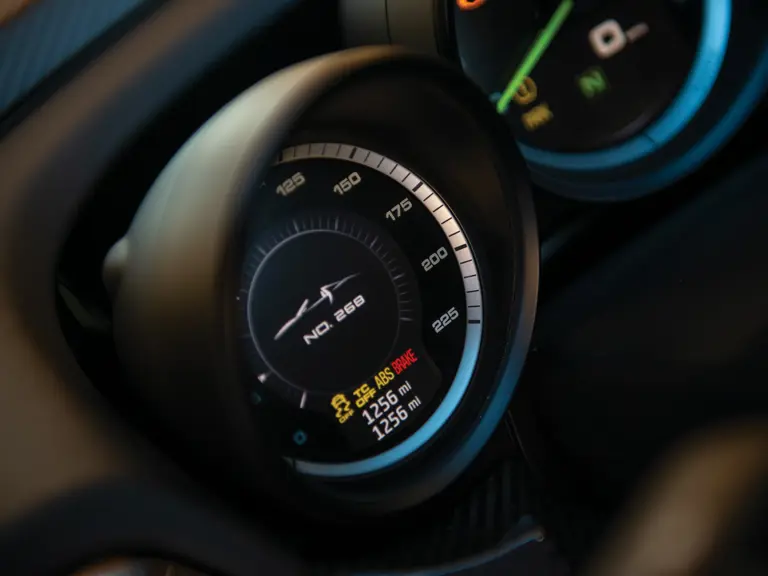

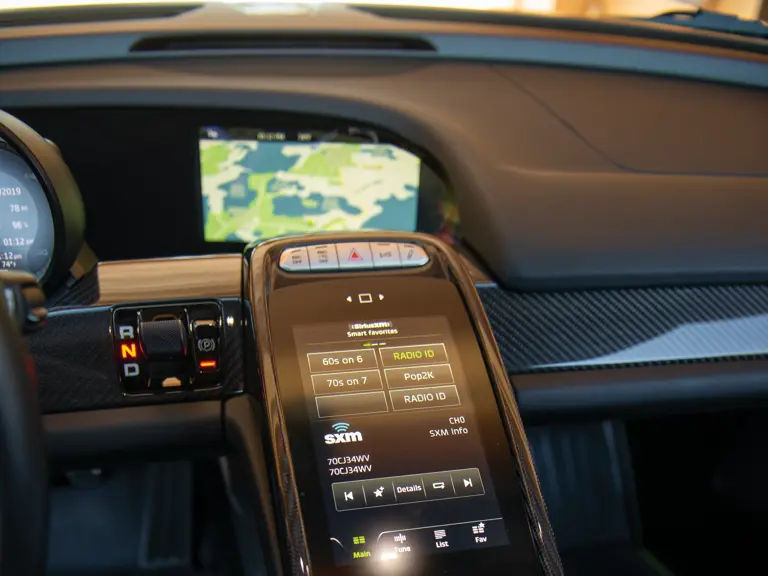
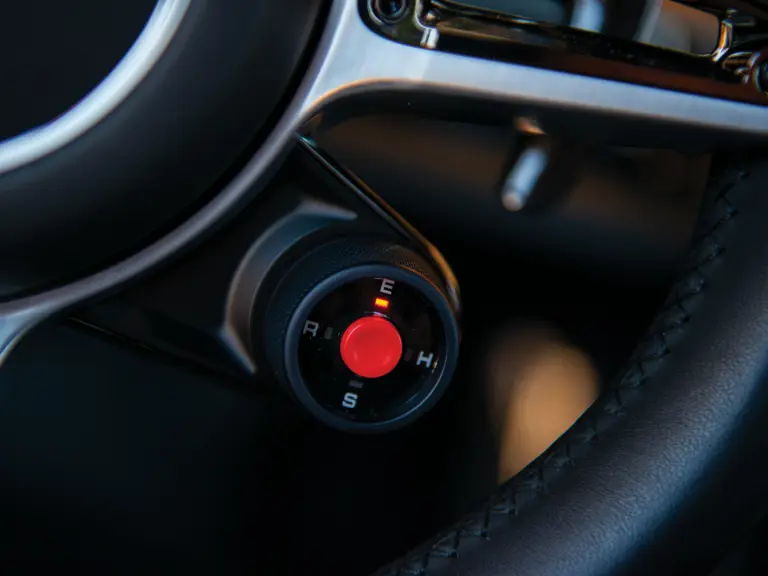
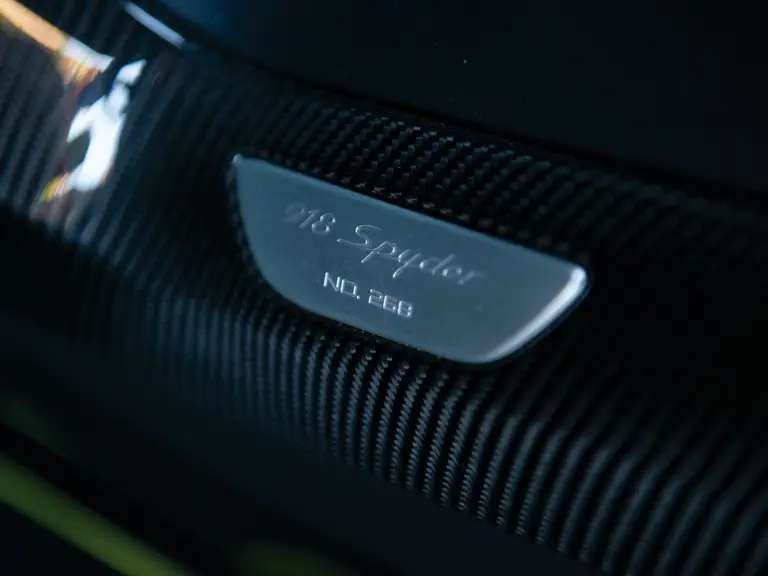

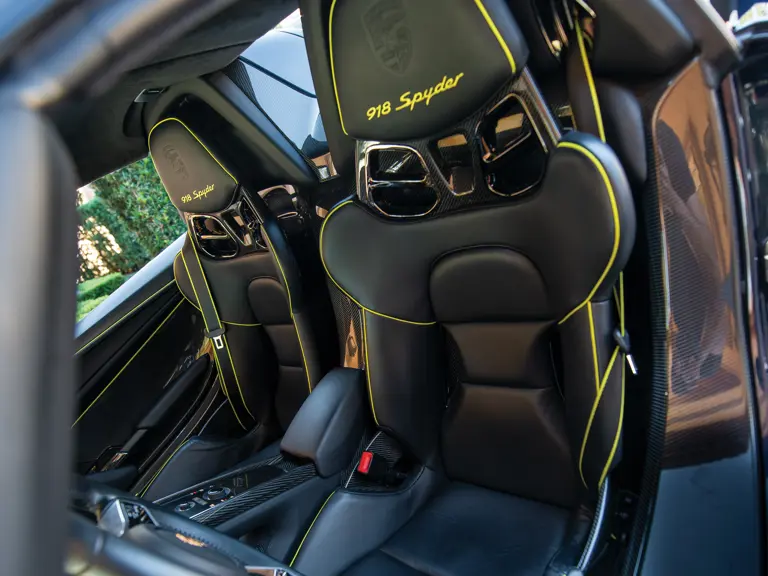
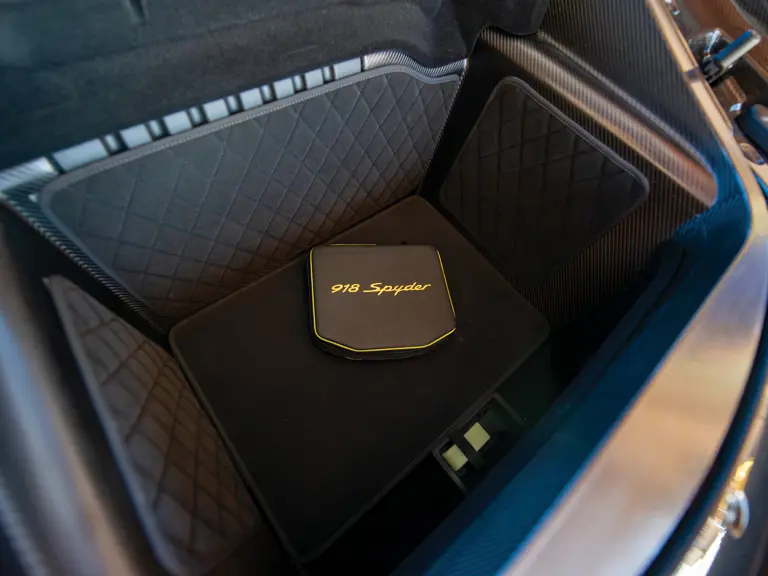
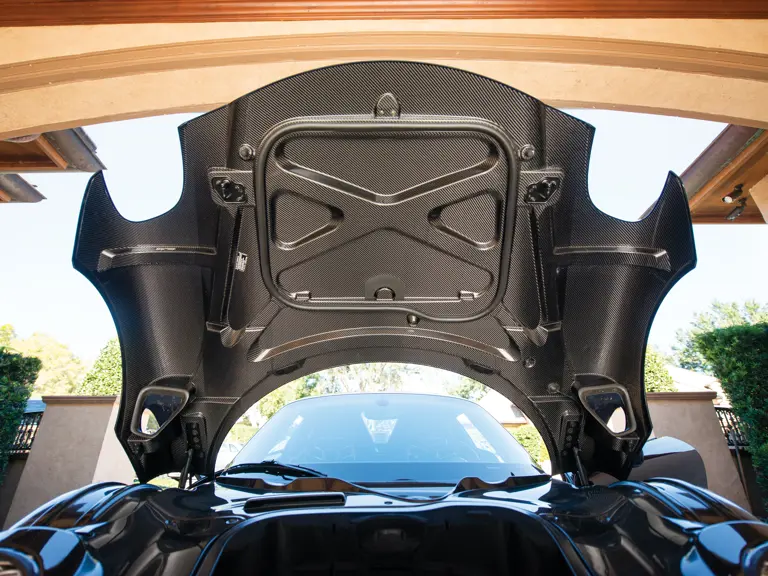
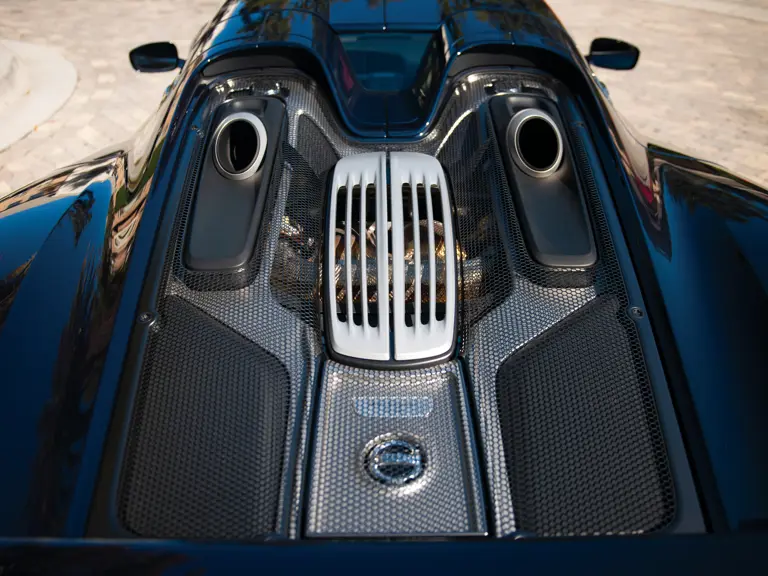
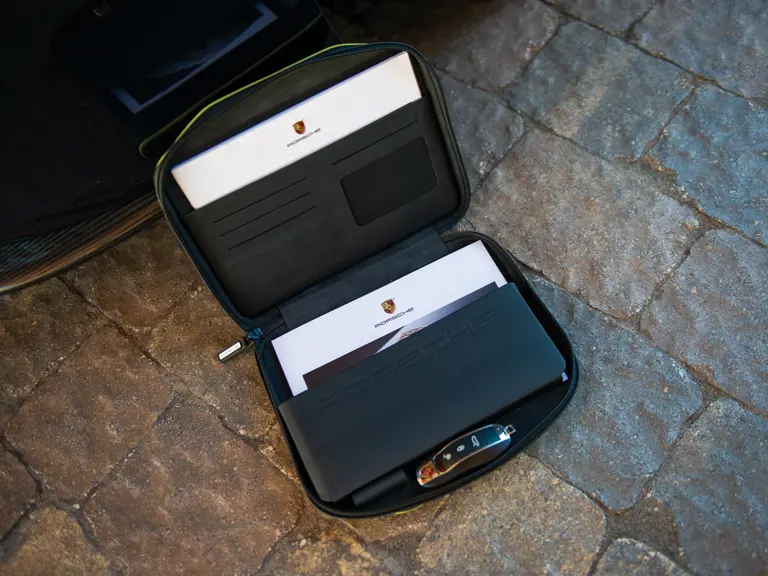
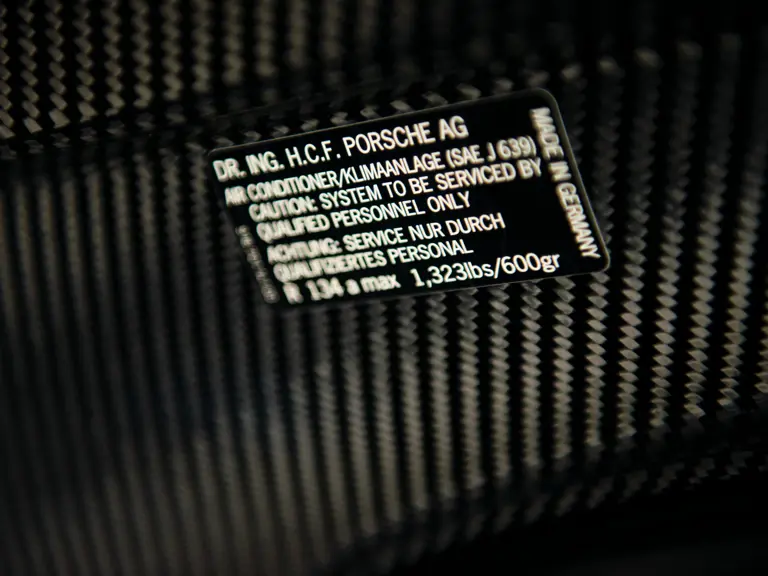
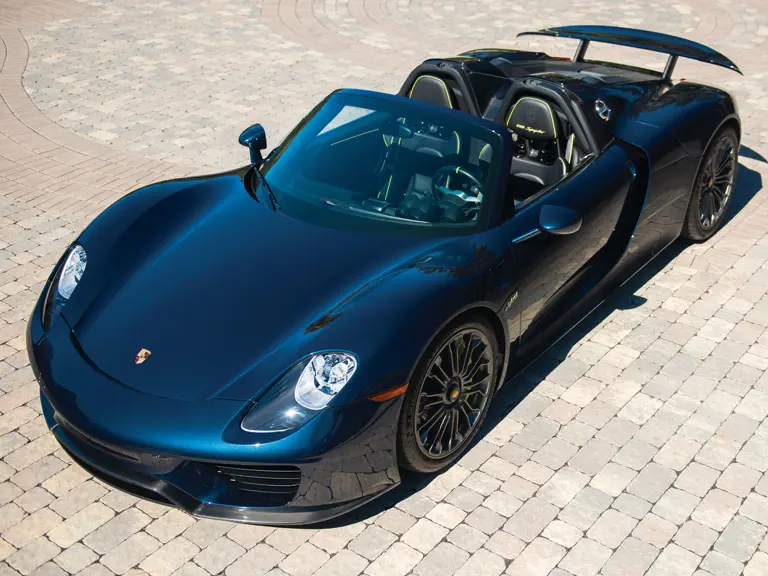



 | Amelia Island, Florida
| Amelia Island, Florida

